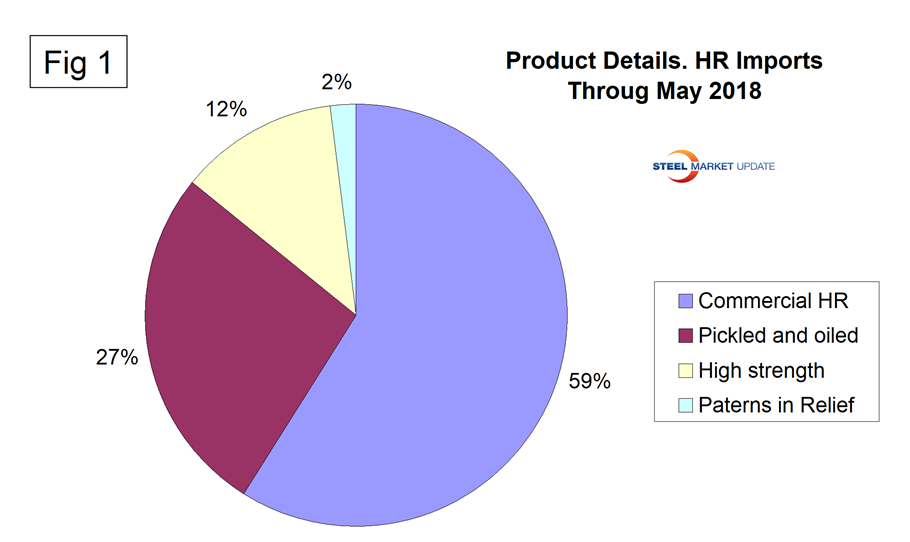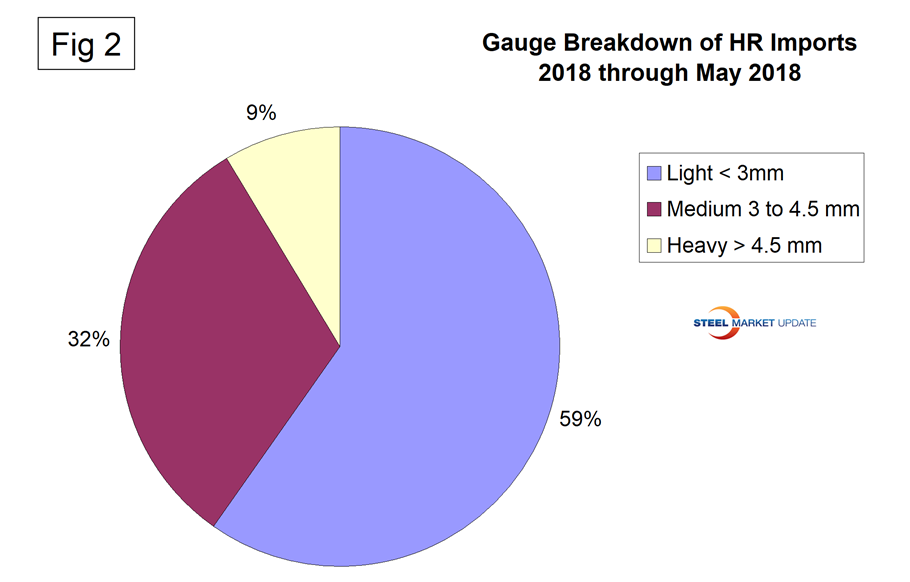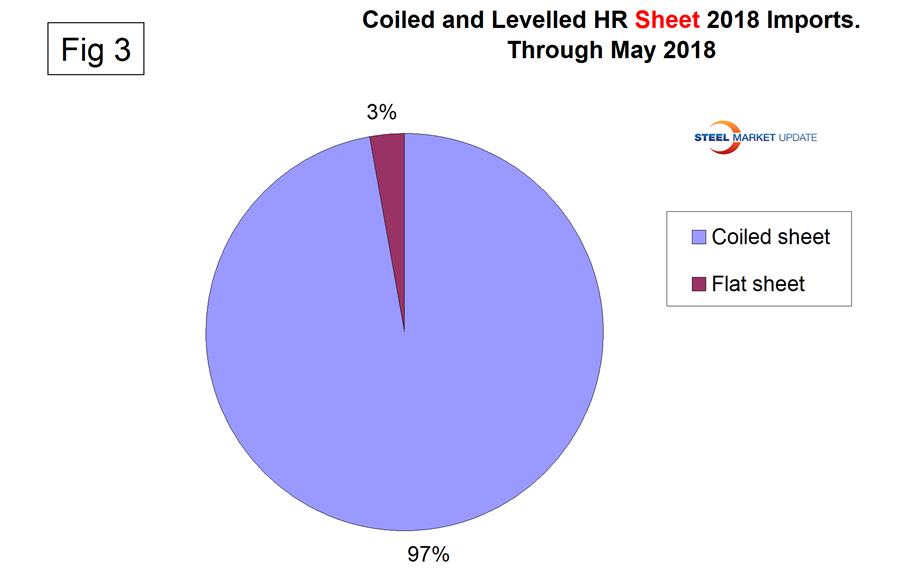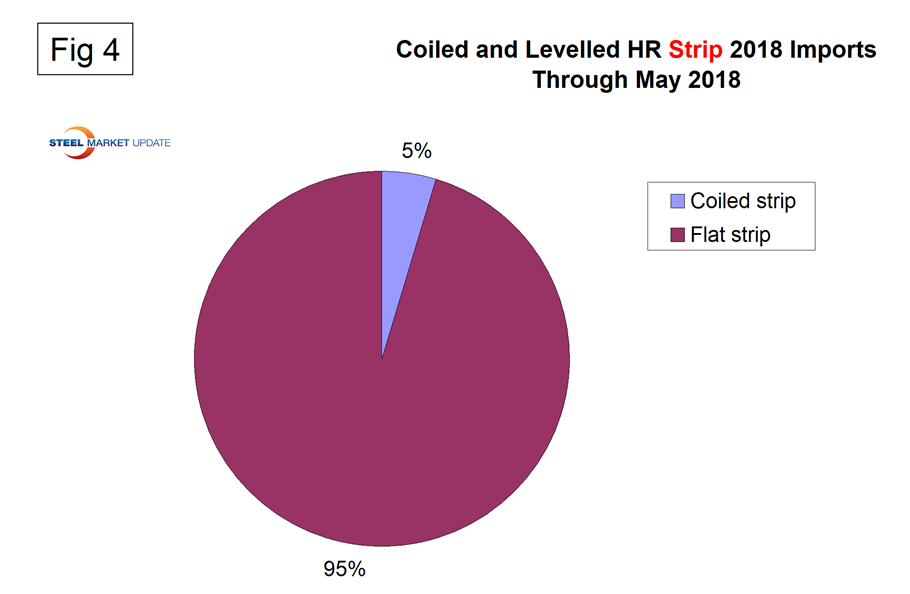SMU Data and Models

New SMU Report Identifies Hot Rolled Imports by Product Detail
Written by Peter Wright
July 17, 2018
Premium subscribers to Steel Market Update have access to reports on SMU’s website that break out the import tonnage into district of entry and source nation for six sheet and plate categories. SMU has now developed reports that drill down to provide more product detail on hot rolled and cold rolled coil. We report these in alternate months. This month we will focus on hot rolled. Our August report will cover cold rolled.
Using U.S. International Trade Commission (USITC) data, SMU has taken the import tonnage of HRC and broken it down into sheet and strip, and whether it was in coil or leveled. Then it separates three gauge ranges, it identifies how much was P&O, how much was high strength and how much had patterns in relief.
Table 1 (click to enlarge) shows a monthly and year-to-date summary for each of the above conditions.

Figure 1 breaks the year-to-date tonnage down into commercial HR sheet, pickled and oiled, high strength and sheet with embossed patterns.

Figure 2 breaks the year-to-date tonnage down into three gauge ranges—light, medium and heavy.

Figure 3 breaks hot rolled sheet imports into coiled and leveled tonnage.

Figure 4 breaks hot rolled strip imports into coiled and leveled tonnage.

Table 2 (click to enlarge) is a small part of a sheet that shows detail for every region in the U.S. and is available in the premium section of our website. It shows the product detail of hot rolled sheet and strip imports by district of entry. For example, the largest tonnage item entering Chicago in the first five months of 2018 was light gauge coiled sheet. Pointing to another example, if a steel buyer wanted to know how much light gauge, high strength, pickled and oiled coiled sheet had come into Cleveland year to date, the answer is 1,737 metric tons.
In August, we will present the same analysis for cold rolled sheet and strip through June.
Note: This data was accessed through the USITC database. All steel traded globally is classified by the Harmonized Tariff System (HTS). The HTS code has 10 digits. The first six are globally universal. The last four are used at the discretion of the nations involved in a particular transaction and are the basis of this report. The way the U.S. uses the last four digits to define products may be different from other nations’ product classification.

Peter Wright
Read more from Peter WrightLatest in SMU Data and Models

SMU Survey: Sheet lead times ease further, plate hits one-year high
Steel buyers responding to this week’s SMU market survey report a continued softening in sheet lead times. Meanwhile, plate lead times have moderately extended and are at a one-year high.

SMU Survey: Buyers report more price flexibility from mills
Nearly half of the steel buyers responding to this week’s SMU market survey say domestic mills are showing increased willingness to negotiate pricing on new spot orders. This marks a significant shift from the firmer stance mills held in prior weeks.

SMU Survey: Buyers’ Sentiment Indices fall
Current Sentiment Index dropped six points to +42 this week compared to two weeks earlier. It has fallen in every successive survey since reaching a 2025 high of +66 on Feb. 19.

March service center shipments and inventories report
Steel service center shipments and inventories report through March 2024.

Apparent steel supply contracts in February
The amount of finished steel that entered the US market in February receded from January’s peak, according to our analysis of Department of Commerce and American Iron and Steel Institute (AISI) data.

